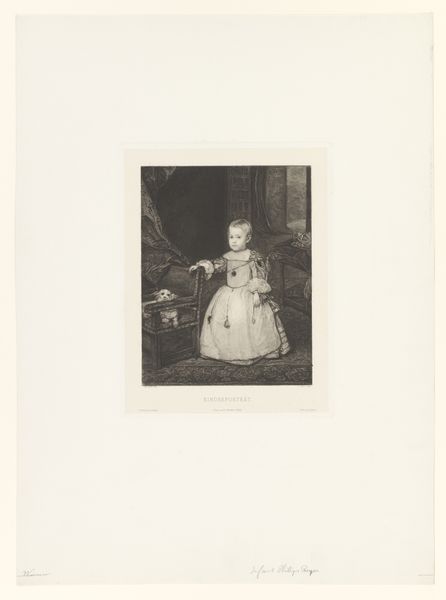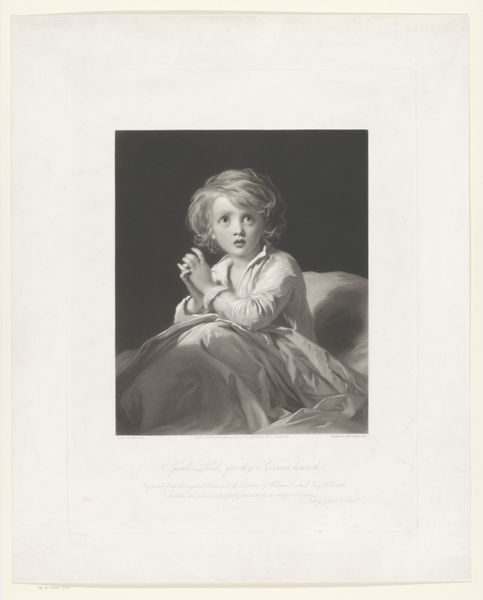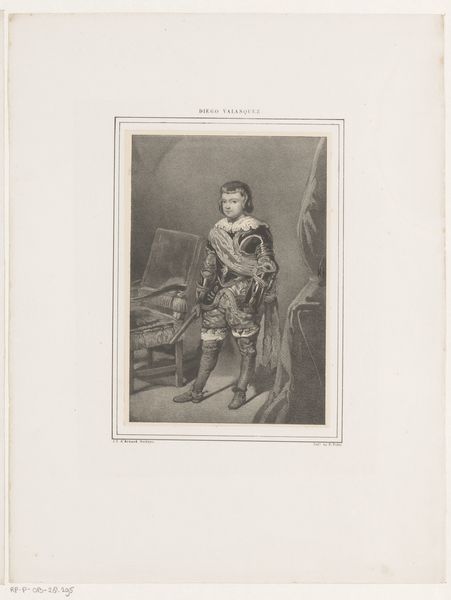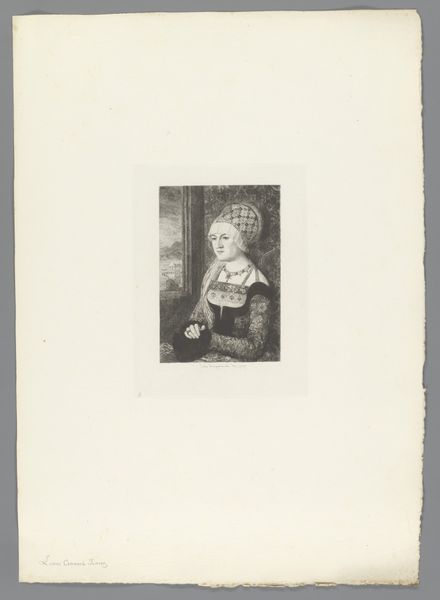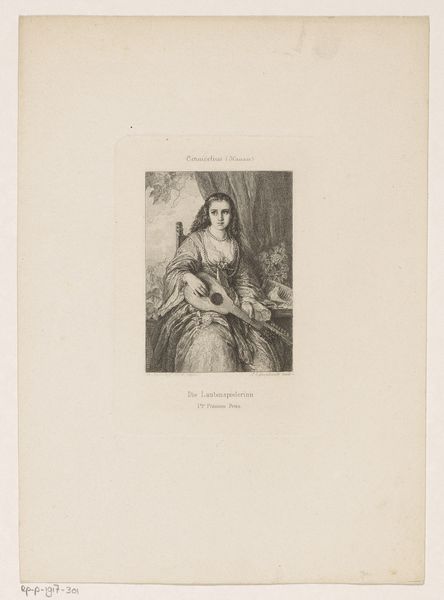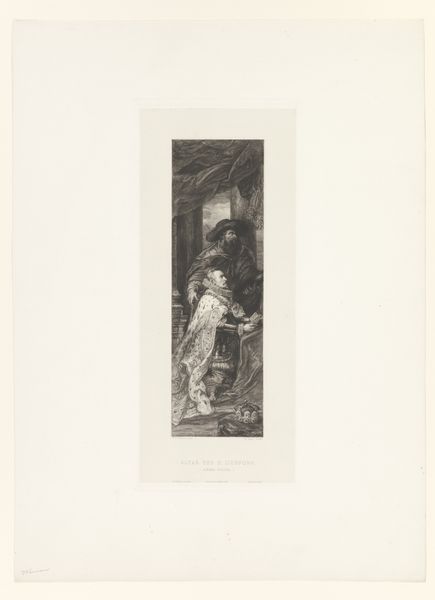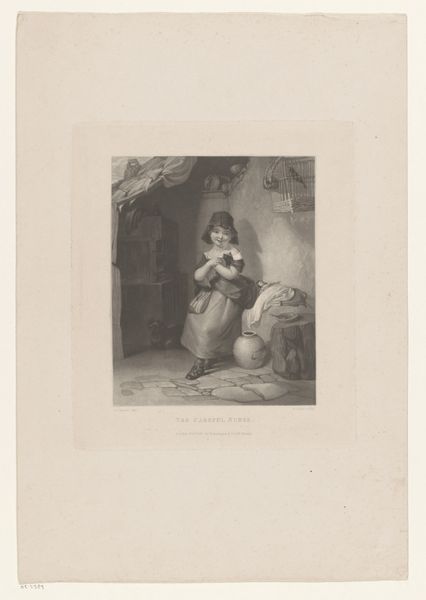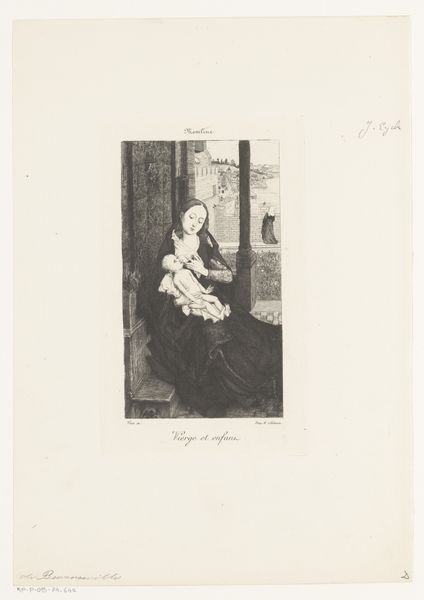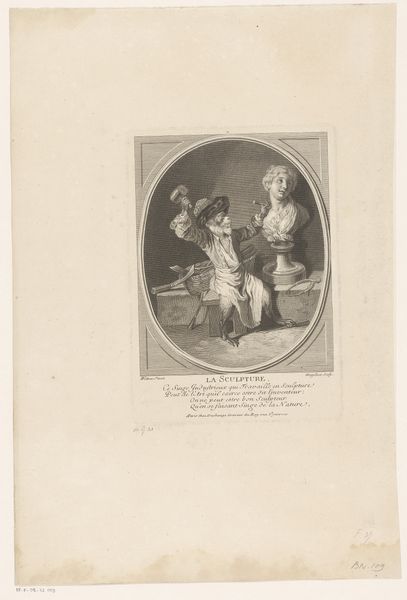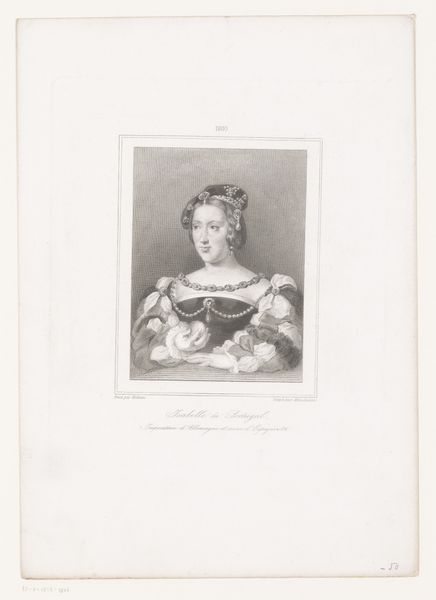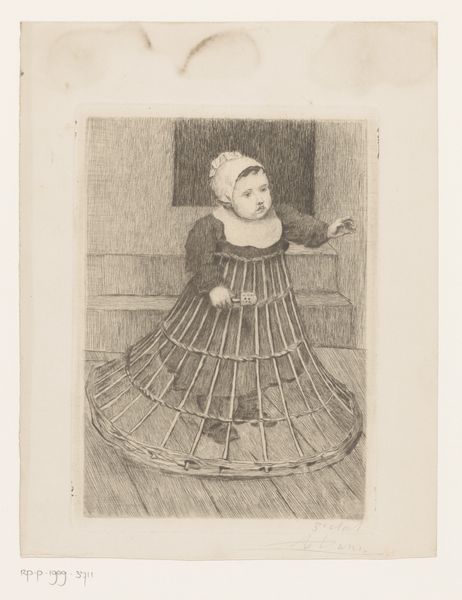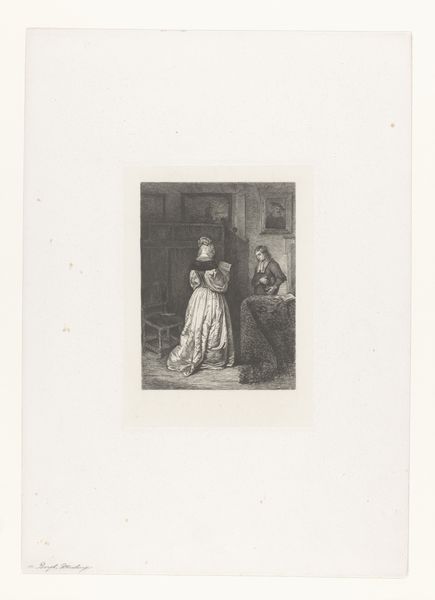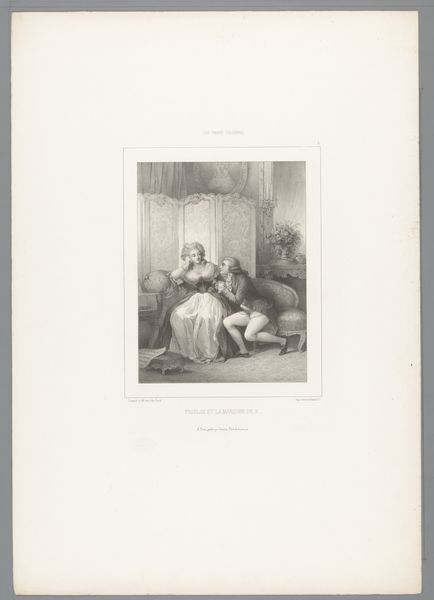
drawing, print, etching, engraving
#
portrait
#
drawing
# print
#
etching
#
child
#
engraving
Dimensions: height 359 mm, width 246 mm
Copyright: Rijks Museum: Open Domain
Curator: Before us we have an engraving, etching and print crafted by William Unger between 1861 and 1889. It is entitled "Portret van Margaretha Theresia van Spanje" and is housed right here at the Rijksmuseum. Editor: Wow, it’s...intense, isn’t it? All that heavy shading, like a spotlight’s caught this tiny figure in a grand drama. And those details on the dress! Incredible. Curator: It speaks to the way childhood and royalty were intertwined as political instruments. Margaret Theresa, a Habsburg infanta, became a chess piece in the dynastic games of 17th-century Europe. She became Holy Roman Empress at just fifteen. Editor: Fifteen? That's barely out of childhood herself! You see it in her face, that little-girl-lost expression amidst all that finery. The roses, are they symbolic do you think? Almost funereal, the way they're arranged. Curator: Flowers are often symbols of beauty and fragility. There is indeed an interplay between the carefully constructed image of royal power and the inherent vulnerability of youth and gender. Think of the societal expectations and the lack of autonomy afforded to women in positions of power. The painting almost reflects a visual power struggle. Editor: Exactly. Makes you wonder about the story behind this piece. The way Unger recreated this scene, choosing those lines and shadows... It's not just a portrait; it's a quiet rebellion against that stifling world. Almost like she's whispering, “See me, really see me, beneath the lace and protocol." Curator: And that whisper resonates even now, across centuries and cultural shifts. It allows us to critically assess systems of power, inherited privilege, and the historical constraints on identity. What do you take away from this reflection, considering your modern perspective? Editor: Well, I think it's that idea of seeing beyond the surface. Not just with art, but with everyone we meet. We all carry our stories, our struggles, beneath the fancy dresses or everyday clothes. Curator: I concur. This artwork stands as a testament to the layers of meaning art can embody when viewed through the lenses of history, identity, and societal critique.
Comments
No comments
Be the first to comment and join the conversation on the ultimate creative platform.
